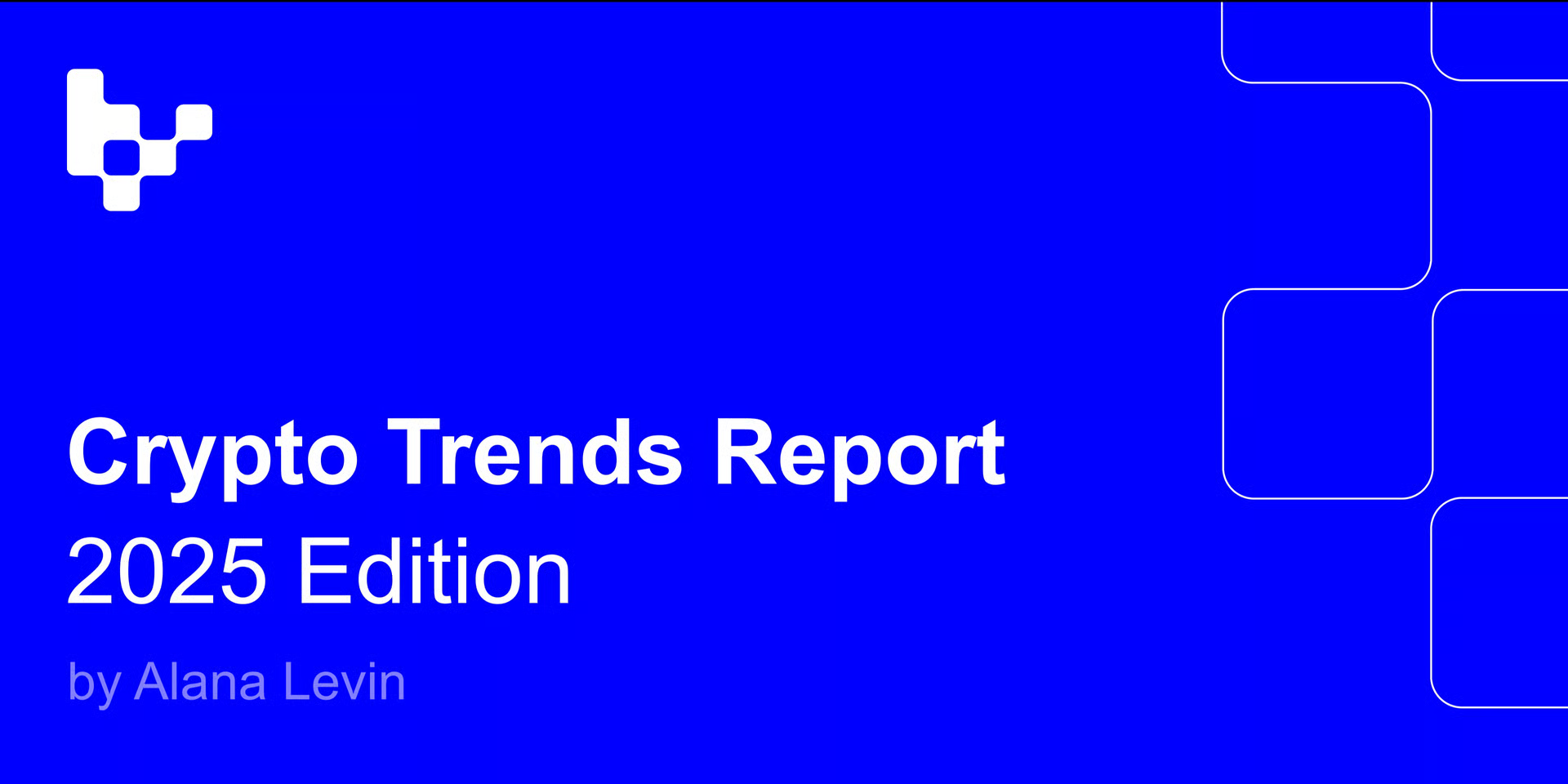Author: YBB Capital Researcher Ac-Core
TLDR
- Unlike the last bull market driven by macroeconomic prosperity, the current crypto market is mainly influenced by macroeconomic uncertainties.
- ETFs are merely a “delayed-release ibuprofen,” while the trend of crypto mirroring the U.S. stock market has become a constraint on the industry’s growth potential.
- This is currently only a Bitcoin bull market, with altcoins showing no signs of life. The primary reasons include insufficient innovation across the industry, a lack of liquidity, and unreasonable valuations in the primary market, leading to a lack of capital momentum and difficulty in achieving volume-driven growth.
- The repetition of old narratives fails to sustain market value, and with traditional institutions like BlackRock entering the space and the industry lacking innovation, internal competition seems inevitable.
I. The Four-Year Halving Cycle: Can It Still Be the Key to the Bull Market?
1.1 The Starting Point of This Bull Market is Completely Different
Bitcoin was coincidentally born during the backdrop of an economic crisis, possibly as a response to resisting the over-issuance of national fiat currencies and intervention in monetary policies. Looking back at its development, before Bitcoin was widely banned in China in 2021, there is no denying that China was a major driver of the industry’s growth, with its mining operations once accounting for two-thirds of the global total. Meanwhile, the broader economy experienced significant growth, fueled by real estate and the internet boom. Until 2021, the overall macroeconomic environment was positive, with central banks continuously injecting liquidity into the market, driving high investor optimism. However, after 2020, the cooling of the real estate sector, along with a broader economic slowdown, drained liquidity from certain markets.
From an innovation perspective, DeFi Summer spurred Ethereum’s internal economic loop, which became the main driver of its explosive growth. Subsequently, NFTs, MEMEs, and GameFi continued to attract massive inflows of resources, at times even sparking a craze for digital collectibles. The rise in market capitalization fueled the industry’s expansion. However, this time around, innovation in the industry has mostly been a rehash of old ideas, and perhaps the bull market hasn’t arrived yet because the new narratives haven’t made a significant impact.
If we view the period from early 2019 to early 2021 as the beginning of the bull market, Bitcoin’s price ranged between $4,000 and $10,000, while Ethereum was in the $130-$330 range. The overall size of the crypto market was relatively small, with ample room for growth. However, according to data from CompaniesMarketCap, Bitcoin’s current market cap ranks 10th globally, just behind Facebook, and has about three times more growth potential compared to Apple, and about 15 times compared to gold. The growth outlook this time is smaller than the previous cycle.
Halving-driven growth may be the last chapter of this story. The crypto market’s cyclical growth has always been tied to macroeconomics. Since Bitcoin’s genesis block in 2009, its $1 trillion+ market cap achievement could not have been realized without periodic liquidity injections to stimulate the economy. The only constant in financial markets is change, and even if you manage to hold your position, you won’t know how deep the downturn will go.
Image Source:CompaniesMarketCap
1.2 Where Does Bitcoin’s Positioning and Future Growth Potential Lie?
Is Bitcoin’s safe-haven status only recognized within the crypto space?
To this day, the U.S. dollar still controls the world through its pricing power. Gold, regarded as a “safe haven” for risk aversion and wealth preservation, has historically seen new highs during times of major crises. The first gold rally began with the collapse of the Bretton Woods system after World War II, when the U.S. dollar was decoupled from gold. The driving forces were geopolitical tensions and inflation. The second rally started in 2005 as gold prices surged, and after the subprime crisis broke out, large amounts of investment capital fled to the safety of gold, with the rally ultimately ending after the Libyan War in 2011. Once again, geopolitics were a major factor. The third rally saw a turning point in 2018, with the global COVID-19 pandemic and central bank liquidity injections acting as key drivers, alongside localized geopolitical conflicts. Gold has always been the first choice for hedging risks, with the Federal Reserve’s quantitative easing and geopolitical factors being the primary forces driving gold prices higher.
As of Thursday, September 12 (Beijing Time), spot gold closed up by 1.84%, reaching $2,558.07 per ounce, marking a new record high closing price. Spot silver rose by 4.19% to $29.8792 per ounce, while COMEX gold futures rose by 1.78%, closing at $2,587.6 per ounce, also setting a new high (data source: Qianzhan Research News). The idea that Bitcoin, like gold, is a safe-haven asset seems to have been debunked, as gold soared while Bitcoin did not follow suit. Instead, Bitcoin’s price trend closely mirrored that of U.S. stocks.
Bitcoin’s greatest value: A tool for resisting economic sanctions and the lack of trust in fiat currencies
In the context of economic globalization, all nations aspire to make their national currencies internationally traded, reserved, and settled. However, this ambition is hindered by the “Trilemma” of monetary sovereignty, capital mobility, and fixed exchange rates. Drawing from insights in Currency Wars, paper money has no intrinsic value — it derives its worth solely from the backing of a nation’s credit. Whoever controls a nation’s currency issuance can effectively bypass the country’s legal framework. Even the mighty U.S. dollar struggles to maintain its massive credit backing in the long term. Economic globalization inherently contains an unsolvable contradiction between global currency dominance and national interests. For example, El Salvador adopted “dual fiat currencies” to promote Bitcoin’s use across the nation, thereby weakening the influence of the U.S. dollar, while Russia began allowing residents to trade cryptocurrencies and use them for trade settlements to circumvent sanctions starting in September 2024.
The dilemma of Bitcoin: Its value comes from hedging against risks in fiat currency trust, but its upward momentum still relies on policies from powerful nations, the adoption by monopolistic capital, and macroeconomic conditions.
II. ETFs Are Only Short-Term Pain Relief, Not a Cure
2.1 The Post-ETF Era in Crypto: A Failed Resistance Against Power
Image Source:The Guardian-News
Bitcoin was born against the backdrop of an economic crisis, and blockchain’s unique attributes can resist the over-issuance of sovereign currencies and interventions in monetary policy. Anti-authority, pro-freedom, and decentralization were once our beliefs and slogans. Within the industry, various “players” harbored speculative motives, with the dream of getting rich overnight seeming to be the primary driver of industry growth. But ultimately, Bitcoin ETFs are merely a one-time, unavoidable boost.
What was once our belief in resisting authority has now become hope placed in that very authority. It seems that in our crypto utopia, we only care about profits, not the direction. The market is constantly cheering for the good news surrounding ETFs, hoping for more exposure to bring in capital and serve as exit liquidity. The very community that once resisted authority is now gradually offering the fruits of its labor to that same authority.
BlackRock, Vanguard, and State Street are the companies that dominate the world, and today, BlackRock is gaining control over Bitcoin.
Who are the most powerful companies in the world? Apple, Tesla, Google, Amazon, Microsoft? Actually, none of them. The real answer is the aforementioned global asset management giants, with BlackRock holding the title of the world’s largest asset manager for 14 consecutive years, from 2009 to 2023.
The direct impact of the post-ETF era is that prices will become more aligned with traditional financial markets. Only those who hold the most tokens will have the most influence, and the U.S. is gradually gaining ideological control over the crypto industry. According to a report from QCP Capital on September 10, 2024, macroeconomic uncertainty continues to dominate the crypto market, with Bitcoin’s 30-day correlation with the MSCI World Stock Index reaching 0.6, the highest in nearly two years.
Undoubtedly, crypto first sprouted in China, but today the “big players” have changed. More professional competitors are on their way. The future will not only require the selection of brand IP and sector focus but will also demand strong trading and execution capabilities. The Matthew Effect will permeate every corner of the industry, and the crypto world is steadily evolving toward “Wall Street-level” trading complexity.
2.2 The Gold Rush Metaphor
Looking back at the California Gold Rush over a hundred years ago, hundreds of thousands of people, driven by the dream of overnight wealth, flocked to California from around the world. However, most of them left empty-handed, and some even lost their lives. In contrast, Levi Strauss, by taking a different path, used the gold rush to sell large quantities of stockpiled canvas, turning them into durable pants for gold miners, which became very popular due to their practicality. Later, he refined the pants, becoming the founder of blue jeans and creating the globally recognized Levi’s brand.
Interestingly, Bitcoin mining through Proof of Work (PoW) and Ethereum staking via Proof of Stake (PoS) bear a striking resemblance to this. PoW’s mining craze led “gold seekers” to carry mining machines with them, while PoS staking led them to use their capital as the tool. However, “Levi Strauss” figures are ubiquitous in this scenario. Behind the scenes of this gold rush, the miners are chasing their dreams of getting rich, while the Levi Strauss types are eyeing the miners’ capital. The 24/7 global crypto market presents countless opportunities for these “gold seekers,” but it also makes the market highly volatile. High risk is accompanied by high rewards, with profits and risks constantly testing everyone’s courage and diligence.
The fast pace, uninterrupted trading, and highly volatile market present both enticing traps and endless trading opportunities. This is precisely the allure of crypto. The combination of strong financial attributes and low entry barriers makes crypto a naturally high-quality gold mine. While we once cheered for ETFs, expecting them to bring more outside capital, the reality is that ETFs are opening the door for more “Levi Strauss” figures to enter.
More “Levi Strauss” Types Will Enter the Crypto Market
The introduction of ETFs will not only bring in external capital as “exit liquidity” but will also attract risk-hedging traders. The greatest innovation of blockchain so far has been bringing finance on-chain, establishing a “self-sustaining economic cycle” within the crypto market, and effectively preventing direct intervention from powerful entities and “Old Money.” However, the post-ETF era in crypto, to some extent, hands over the comprehensive financial derivative tools to these forces, further attracting more arbitrageurs and large capital, which will squeeze the already limited market profit margins.
III. The Primary Market Struggles to Break Through
Low Liquidity and High FDV in the Primary Market
Recently, compared to the past, tokens launched in the primary market have universally displayed extremely high FDVs (Fully Diluted Valuations) and low liquidity. According to data from Binance’s report “Observations and Reflections on High Valuations and Low Liquidity Tokens,” the ratio of market cap (MC) to FDV for tokens launched in 2024 is the lowest in recent years. This indicates that a large number of tokens are yet to be unlocked in the future, and by the first few months of 2024, the FDV of tokens issued had already approached the total FDV of all tokens issued in 2023.
Image source: @thedefivillain, CoinMarketCap, and Binance Research Institute, data published on April 14, 2024
In a market lacking liquidity, tokens will continue to unlock after the TGE, creating significant selling pressure. But did VCs really make money this round? Not necessarily. In most cases, compliant and regulated project fundraising requires tokens to undergo at least a one-year cliff period before unlocking and releasing. In cases of high FDV and low liquidity, projects may encounter token unlocks resulting in price crashes, though small VCs may still sell off on the secondary market or pre-sell off-market.
As the chart below shows, the circulating supply ratio for these tokens is below 20%, with the lowest at just 6%, highlighting the stark reality of high FDV.
Image source: CoinMarketCap and Binance Research Institute, data published on May 14, 2024
Clearly, capital-driven momentum is currently ineffective. In addition to the above, there are other objective factors contributing to the low liquidity and high FDV situations:
- Fragmented Markets, Too Many Competitors: In the previous cycle, both domestic and foreign capital worked together to hype DeFi and layer-1 chains. However, in this cycle, the funding and participants are too dispersed across multiple narratives, with Western and Eastern capital often not picking up each other’s projects. This leads to situations where there aren’t enough buyers to meet the number of sellers.
- No Altcoin Bull Market, Lack of Speculation: EVM-based chain infrastructure has matured, with funds and projects all vying in the same directions. “Ethereum Killers” haven’t come up with anything new. Additionally, in a market without an altcoin bull run, when one project succeeds in a particular sector, copycat projects quickly appear, presenting themselves as the next undervalued opportunity.
- Complicating Simple Things, Turning Complexities into Stories: Pseudo-innovations that overcomplicate simple matters are everywhere. Repackaging old concepts is often done just to sell the market a bigger dream.
- The Matthew Effect is Everywhere: The crypto industry has been developing for over 16 years, and monopolistic benefits at the top have essentially solidified. Whether in terms of technology, projects, or capital, the strong have only become stronger, while the weak have become weaker. Those who have survived this long have reinforced their control over the narrative.
- The Challenge of Sustainable Growth: A lack of innovation and liquidity are the most pressing challenges for the market right now.
















